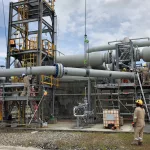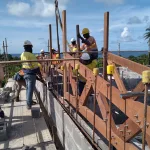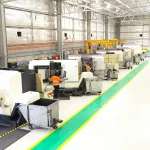The first whispers of worry about a Chinese property bubble surfaced in late 2009. Since then, the local real estate market has quickened and slowed in line with government measures to stoke or cool the market, but has never crashed. Nonetheless, some market watchers insist that the Chinese property bubble would burst one day. Recent sector weakness has given them further ammunition, as has the near collapse of Kaisa, a mid-sized Shenzhen-based developer.
Until December 2014, Kaisa’s finances were perceived to be strong and sales were rising. Now its survival is at the mercy of lenders and rivals. Its woes started when the government halted some of its Shenzhen projects in December without giving a reason. The chairman abruptly resigned, while debts to banks and bondholders have gone unpaid and the firm is in the process of being acquired by its competitor. It has yet to reach a consensual solution with its creditors.
Kaisa’s mysterious implosion seems to stem from China’s unprecedented two-year anti-corruption drive. Authorities have largely kept silent about the affair but it has since been alleged that the firm is being probed for ties to a local official accused of corruption.
Such a saga is unlikely to be repeated on the same scale. The government can scarcely afford to dent investor confidence, which might cause developers to lose access to offshore funding. Already, US-dollar bond issuances from Chinese real estate companies have fallen significantly in the first quarter this year, a period that usually sees a lot more activity. Chinese property companies issued US$3.6 billion of new issues in the first three months of 2014, a 48 percent drop compared to the same period in 2014 and a 57 percent decline compared to 2013.
Meanwhile, Kaisa’s near collapse has rekindled fears of a hard landing in the property sector, despite having little to do with the real estate downturn. Property activity indicators have been trending lower since mid-2013 and the latest data remained lacklustre. Year-to-February property sales fell almost 16 percent year-on-year. Average prices of new homes fell further in February, marking six months of successive declines.
To some, these figures spell doomsday. But we cannot underestimate the Chinese government’s commitment to its property market, which is the linchpin of the broader economy. If it aims to meet its goal of 7 percent GDP growth in 2015, the real estate market has to stay healthy. Neither can we forget the wide range of tools Beijing possesses. The government successfully engineered a property boom during the financial crisis to compensate for the weakness in overseas demand, and later on, implemented tightening measures when it was time to cool the heated property market.
China’s successful policymaking was evident in the fourth quarter last year. After the central bank relaxed requirements for mortgage lending in September and cut interest rates in November, both primary and secondary home transactions shot up. Since then, the central bank has cut interest rates again and freed up more money for lending via a reduction in the reserve requirement ratio. Mortgage rules have also been relaxed; homeowners now pay less downpayment for their second home and no longer need to pay sales tax for houses that have been held for at least two years, down from five years previously. More measures to pump up the economy, including looser housing market regulations and broader monetary easing, are expected this year.
On a longer-term basis, the structural demand for Chinese property remains intact. Migration from the countryside has helped expand the urban population by 500 million in the past three decades. Over half of the population is now urban and the government is planning to increase this ratio to 60 percent by 2020. As an asset class, property is also naturally attractive for the locals because alternative forms of investments are limited.
This is not to say that the property sector is in the pink of health. In the shorter term, Chinese property bonds are likely to remain volatile as offshore creditors demand more risk premium in the wake of the Kaisa saga. Yet valuations are now looking attractive. The average yield of high-yield Chinese real estate climbed from 9 percent in mid-2014 to 10 percent at the end of March. By way of comparison, the end-March yield of the overall Asian high-yield corporates was 7.5 percent and their US counterparts measured in at 6.4 percent.
In terms of economic fundamentals, the housing market might soften over time to a more sustainable growth trajectory. But is important to look through the fog of negativity and recognise that policymakers would not allow a meltdown, which would have tremendous repercussions for the whole economy. They have also proven adept at steering the economy. Calls for the bubble to burst are repetitive, laborious and ultimately, unprofitable.


























